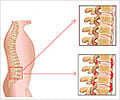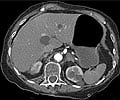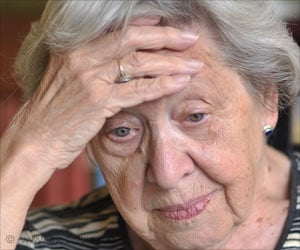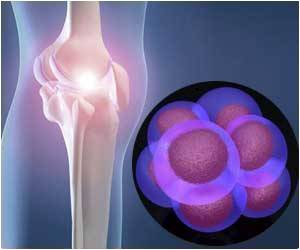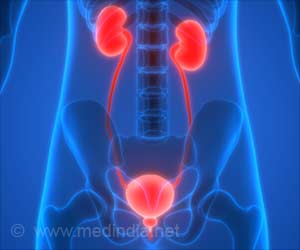Smoking can increase the effect of inflammation on X-ray damage in people with ankylosing spondylitis by nearly five times.

Ankylosing spondylitis is a type of inflammatory arthritis characterized by joint stiffness, pain and extra bone growth that can result in partial or complete fusion of the spine. The disease typically affects young men and may lead to work disability and spinal deformity.
"The OASIS study follows a large number of patients over 12 years according a fixed protocol with assessments of many outcomes, including radiographs," says Sofia Ramiro, MD who is the lead investigator in the study. "This provides a unique opportunity to assess long-term outcome."
Through OASIS, 127 people with ankylosing spondylitis were followed by Dr. Ramiro's team for 12 years. The participants - 71 percent of which were men with an average age of 41 and an average symptom duration of 18 years - received a physical exam and X-rays every other year. X-rays were scored by two independent reviewers and disease progression was assessed based on the modified Stoke Ankylosing Spondylitis Spine Score.
To evaluate inflammation, the AS Disease Activity Score (an instrument that combines patient's evaluation of the disease and a marker of inflammation in the blood called C-reactive protein) was used. The relationship between ASDAS and damage was investigated over the 12 years by assessing the effect of inflammation at one point in time on the progression of damage two years later. After that, the effect of factors possibly influencing this relationship was investigated.
Dr. Ramiro's team noted that smoking significantly increased the impact of inflammation on X-ray damage across all groups, but especially among men with less than 18 years of symptoms. Overall, smokers had a 5.5 times higher effect of inflammation on X-ray damage compared to non-smokers, and male smokers had a startling 13.4 times higher effect of inflammation on damage when compared to women who did not smoke.
Advertisement
The American College of Rheumatology is an international professional medical society that represents more than 9,000 rheumatologists and rheumatology health professionals around the world. Its mission is to advance rheumatology. The ACR/ARHP Annual Meeting is the premier meeting in rheumatology. For more information about the meeting, visit http://www.acrannualmeeting.org/ or join the conversation on Twitter by using the official hashtag: #ACR13.
Advertisement
Abstract Number: 1510
Disease Activity In Male Smokers Has A >10-Fold Amplified Effect On Radiographic Damage In Comparison With Female NON-Smokers In Ankylosing Spondylitis
Sofia Ramiro1, A.M. van Tubergen2, Robert Landewé3, Carmen Stolwijk2, Maxime Dougados4, Filip Van den Bosch5 and Désirée van der Heijde6, 1Academic Medical Center, University of Amsterdam, Amsterdam, Netherlands, 2Maastricht University Medical Center, Maastricht, Netherlands, 3Academic Medical Center Amsterdam & Atrium Medical Center, Heerlen, Netherlands, 4Rheumatology B Department, Paris-Descartes University, Cochin Hospital, Paris, France, 5Gent University Hospital, Gent, Belgium, 6Leiden University Medical Center, Leiden, Netherlands
Background/Purpose: We have shown that disease activity has an effect on radiographic progression over the long-term and that gender and symptom duration are effect modifiers. Smoking has been shown to predict radiographic progression. We sought to investigate whether smoking influenced this longitudinal relationship between disease activity and radiographic damage.
Methods: Patients from the Outcome in AS International Study (OASIS) were followed-up for 12 years, with biannual clinical and radiographic assessments. Two readers independently scored the x-rays according to the modified Stoke Ankylosing Spondylitis Spine Score (mSASSS) and scores were averaged. Disease activity was assessed by the ASDAS-CRP. The relationship between ASDAS and radiographic damage was investigated using generalized estimating equations, with auto-regressive (i.e. adjusted for the 2-year previous mSASSS) models with a 2-year time-lag. Interactions were tested with baseline smoking status and if significant, analyses were repeated in strata.
Results: A total of 127 patients were included (71% males, mean (SD) age 41(12) years, mean symptom duration 18(11) years and 82% HLA-B27 positive). Smoking status modified the relationship between disease activity and radiographic damage significantly (p<0.001), and this effect extended to other strata: males (p=0.002) and patients with shorter symptom duration (<18y) (p=0.009); Overall, an increase in one ASDAS-unit led to an increase in 0.72 mSASSS-units per 2 years. In smokers, this value reached 1.94 mSASSS-units and in male smokers 2.15 mSASSS-units (Table). Comparing the magnitude of the effect of ASDAS on mSASSS in smokers vs non-smokers, smokers had a 5.5 fold amplified effect, whereas male smokers had a 13.4 fold amplified effect compared to female non-smokers. Smokers with short symptom duration had a 8.1-fold amplified effect compared to non-smokers with long symptom duration (Figure).
Conclusion: Smoking amplifies the effect of disease activity on radiographic damage (5-fold). This effect is further amplified in male smokers (13.4-fold) in comparison with female non-smokers.
Source-Newswise







